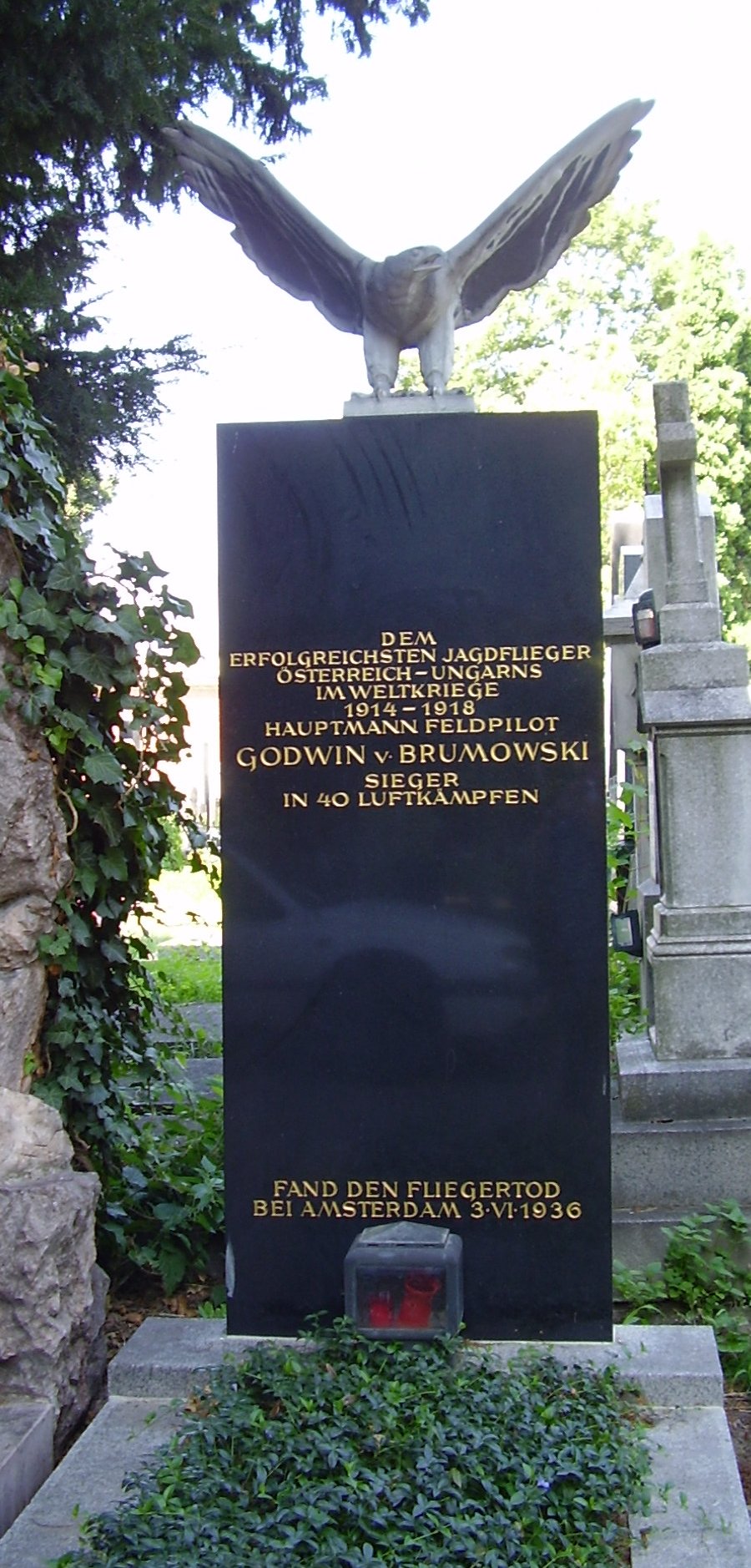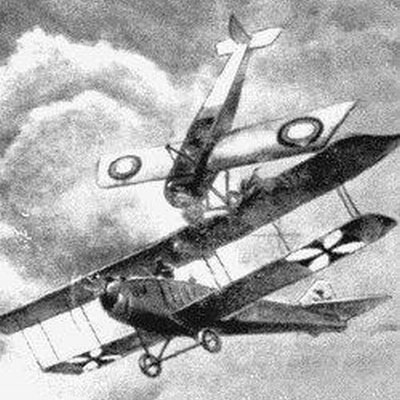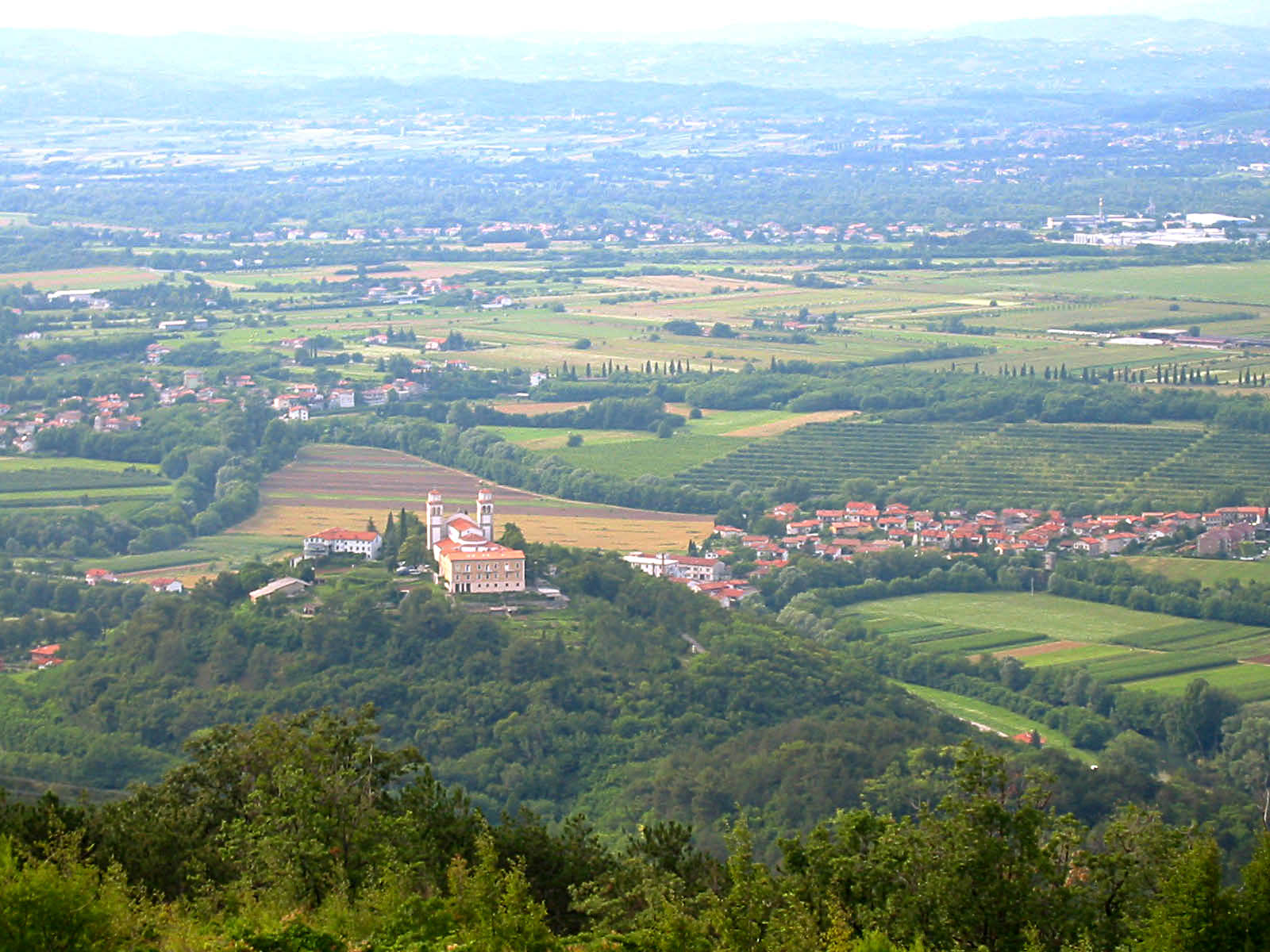|
Godwin Von Brumowski
__NOTOC__ Godwin Karol Marian von Brumowsky (26 July 1889 – 3 June 1936) was the most successful fighter ace of the Austro-Hungarian Air Force during World War I. He was officially credited with 35 air victories (including 12 shared with other pilots), with 8 others unconfirmed because they fell behind Allied lines. Just before the war ended, Brumowski rose to command of all his country's fighter aviation fighting Italy on the Isonzo front. Life before entry into air service Godwin von Brumowski was born into a military family in Wadowice, Galicia (in present-day Poland). He attended the Imperial and Royal Technical Military Academy in Mödling near Vienna and graduated as a lieutenant commissioned into the 29th Field Artillery Regiment on 18 August 1910. He was serving in the 6th Artillery Division as regimental adjutant and had just turned 25 years of age when war was declared against Serbia on 28 July 1914. He served on the Eastern Front against Russia, winning b ... [...More Info...] [...Related Items...] OR: [Wikipedia] [Google] [Baidu] |
Wadowice
Wadowice () is a town in southern Poland, southwest of Kraków with 17,455 inhabitants (2022), situated on the Skawa river, confluence of Vistula, in the eastern part of Silesian Foothills (Pogórze Śląskie). Wadowice is known for being the birthplace of Karol Wojtyła, later Pope John Paul II and Godwin von Brumowski, Austria-Hungary’s best flying ace with 35 credited and an additional 8 possible wins in the air. History The first permanent settlement in the area of today's Wadowice was founded in the late 10th century or early 11th century. According to a local legend, the town was founded by a certain Wad or Wład, a short form for the Slavic name of Ladislaus (). The town was first mentioned as ''Wadowicze'' in St. Peter penny register in the years 1325–1327. In 1327 it is also mentioned (under the same name) in a fief registry sent from prince Jan I the Scholastic, John I Scholastyk of Oświęcim to Bohemian king John I, Count of Luxemburg. At this time it was a trad ... [...More Info...] [...Related Items...] OR: [Wikipedia] [Google] [Baidu] |
Austro-Hungarian Air Force
The Austro-Hungarian Aviation Troops or Imperial and Royal Aviation Troops ( or , ) were the air force of the Austro-Hungarian Empire until the empire's dissolution in 1918; it saw combat on both the Eastern Front and Italian Front during World War I World War I or the First World War (28 July 1914 – 11 November 1918), also known as the Great War, was a World war, global conflict between two coalitions: the Allies of World War I, Allies (or Entente) and the Central Powers. Fighting to .... History The Air Service began in 1893 as a hot air balloon, balloon corps () and would later be re-organized in 1912 under the command of Major Emil Uzelac, an army engineering officer. The Air Service would remain under his command until the end of World War I in 1918. The first officers of the air force were private pilots with no military aviation training. At the outbreak of war, the Air Service was composed of 10 observation balloons, 85 pilots and 39 operational ... [...More Info...] [...Related Items...] OR: [Wikipedia] [Google] [Baidu] |
Morane-Saulnier Parasol
The Morane-Saulnier L, or Morane-Saulnier Type L, or officially MoS-3, was a French parasol wing one or two-seat scout aeroplane of the First World War. The Type L became one of the first successful fighter aircraft when it was fitted with a single machine gun that fired through the arc of the propeller, which was protected by armoured deflector wedges. Its immediate effectiveness in this role launched an arms race in fighter development, and the Type L was swiftly rendered obsolete. The original Type L used wing warping for lateral control, but a later version designated Type LA was fitted with ailerons.Taylor 1989, p. 684. Built by Morane-Saulnier, large numbers of the Type L were ordered by the French '' Aviation Militaire'' at the outbreak of the war. In total about 600 Type Ls were built and, in addition to the French air force, they served with the Royal Flying Corps, Royal Naval Air Service and the Imperial Russian Air Service. The type was also produced under licence i ... [...More Info...] [...Related Items...] OR: [Wikipedia] [Google] [Baidu] |
Otto Jindra
Hauptmann Otto Jindra (18 March 1886, Chlum u Třeboně – 2 May 1932) was an Austro-Hungarian flying ace during World War I, credited with nine aerial victories while flying as an aerial observer. His abilities as both leader and administrator led to his accelerated promotion and appointments to command of aviation units despite his lack of pilot's credentials. After World War I and Austria-Hungary both ended, Jindra became a major mover in founding a Czechoslovakian air arm, which he eventually rose to command. Early life Otto Jindra was born on 18 March 1886 in Chlumetz.''Above the War Fronts: The British Two-seater Bomber Pilot and Observer Aces, the British Two-seater Fighter Observer Aces, and the Belgian, Italian, Austro-Hungarian and Russian Fighter Aces, 1914-1918: Volume 4 of Fighting Airmen of WWI Series: Volume 4 of Air Aces of WWI'', pp. 184–185. He grew to be an athletic young man; he was an equestrian, a swimmer, and a skier. He was an enthusiastic cyclist, ... [...More Info...] [...Related Items...] OR: [Wikipedia] [Google] [Baidu] |
Czernowitz
Chernivtsi (, ; , ;, , see also other names) is a city in southwestern Ukraine on the upper course of the Prut River. Formerly the capital of the historic region of Bukovina, which is now divided between Romania and Ukraine, Chernivtsi serves as the administrative center for the Chernivtsi urban hromada, the Chernivtsi Raion, and the oblast itself. The Chernivtsi population is and the latest census in 2001 was 240,600. The first document that refers to this city dates back to 1408, when Chernivtsi was a town in the region of Moldavia, formerly as a defensive fortification, and became the center of Bukovina in 1488. In 1538, Chernivtsi was under the control of the Principality of Moldavia under Polish suzerainty, later under Ottoman Empire suzerainty, and the Moldavian control lasted for two centuries until 1774, when Austria took control of Bukovina in the aftermath of the Russo-Turkish War. Chernivtsi (known at that time as ) became the center of the Galicia's Buko ... [...More Info...] [...Related Items...] OR: [Wikipedia] [Google] [Baidu] |
Imperial And Royal Aviation Troops
The Austro-Hungarian Aviation Troops or Imperial and Royal Aviation Troops ( or , ) were the air force of the Austro-Hungarian Empire until the empire's dissolution in 1918; it saw combat on both the Eastern Front and Italian Front during World War I. History The Air Service began in 1893 as a balloon corps () and would later be re-organized in 1912 under the command of Major Emil Uzelac, an army engineering officer. The Air Service would remain under his command until the end of World War I in 1918. The first officers of the air force were private pilots with no military aviation training. At the outbreak of war, the Air Service was composed of 10 observation balloons, 85 pilots and 39 operational aircraft. On 25 August 1914 (by the Old Style calendar still used in Russia) September 1914 New Style after trying various methods on previous occasions unsuccessfully, Pyotr Nesterov used his Morane-Saulnier Type G (s/n 281) to ram the Austrian Albatros B.II reconnais ... [...More Info...] [...Related Items...] OR: [Wikipedia] [Google] [Baidu] |
Eastern Front (World War I)
The Eastern Front or Eastern Theater, of World War I, was a theater (warfare), theater of operations that encompassed at its greatest extent the entire frontier between Russian Empire, Russia and Kingdom of Romania, Romania on one side and Austria-Hungary, Kingdom of Bulgaria, Bulgaria, the Ottoman Empire, and German Empire, Germany on the other. It ranged from the Baltic Sea in the north to the Black Sea in the south, involved most of Eastern Europe, and stretched deep into Central Europe. The term contrasts with the Western Front (World War I), Western Front, which was being fought in Belgium and French Third Republic, France. Unlike the static warfare on the Western Front, the fighting on the geographically larger Eastern Front was maneuver warfare, more dynamic, often involving the flanking and encirclement of entire formations, and resulted in over 100,000 square miles of territory becoming occupied by a foreign power. At the start of the war Russia launched offensives agai ... [...More Info...] [...Related Items...] OR: [Wikipedia] [Google] [Baidu] |
Vienna
Vienna ( ; ; ) is the capital city, capital, List of largest cities in Austria, most populous city, and one of Federal states of Austria, nine federal states of Austria. It is Austria's primate city, with just over two million inhabitants. Its larger metropolitan area has a population of nearly 2.9 million, representing nearly one-third of the country's population. Vienna is the Culture of Austria, cultural, Economy of Austria, economic, and Politics of Austria, political center of the country, the List of cities in the European Union by population within city limits, fifth-largest city by population in the European Union, and the most-populous of the List of cities and towns on the river Danube, cities on the river Danube. The city lies on the eastern edge of the Vienna Woods (''Wienerwald''), the northeasternmost foothills of the Alps, that separate Vienna from the more western parts of Austria, at the transition to the Pannonian Basin. It sits on the Danube, and is ... [...More Info...] [...Related Items...] OR: [Wikipedia] [Google] [Baidu] |
Mödling
Mödling () is the capital of the Austrian Mödling (district), district of the same name located approximately 15 km south of Vienna. Mödling lies in Lower Austria's industrial zone (Industrieviertel). The Mödlingbach, a brook which rises in the Vienna Woods, flows through the town. Near Achau it joins with the Schwechat. Woodland occupies a large part of the municipality, part of the Föhrenberge ('Pine Mountains'). Located immediately south of Vienna, and within the boundaries of the district of Mödling, is one of the largest shopping centres in Europe: Shopping City Süd (SCS). Geography Grapes are grown on the slopes of the Wienerwald, Austria, Wienerwald; the area is called ''Thermenregion'', where one can find much ''Heurigen'' (the most recent year's wine). Wiener Neudorf to the east, and Maria Enzersdorf to the north, merge directly into Mödling. South of Mödling is Gumpoldskirchen, separated by the Eichkogel with its very special flora. In the west, a nar ... [...More Info...] [...Related Items...] OR: [Wikipedia] [Google] [Baidu] |
Imperial And Royal Technical Military Academy
The Imperial and Royal Technical Military Academy (German: ''k.u.k. Technische Militärakademie'') was a military training facility founded in 1717 for certain officer groups of the Habsburg monarchy. The location of the academy changed several times in the course of its existence: originally located in Vienna, it was located in Klosterbruck near Znaim from 1851 to 1869, in the ''Stiftskaserne'' in Vienna from 1869 to 1904 and finally in Mödling from 1904 to 1918. The Higher Technical Education Institute Mödling emerged from the academy in 1919. History 18th century The origins of the Technical Military Academy of the Austro-Hungarian Army up to 1918 go back to Field Marshal Prince Eugene of Savoy. During the War of the Spanish Succession he recognized the shortage of military engineers in the Habsburg army and urged Charles VI, Holy Roman Emperor, Emperor Charles VI to set up a corresponding training facility (formal engineering academy). This was then implemented provisionall ... [...More Info...] [...Related Items...] OR: [Wikipedia] [Google] [Baidu] |
Isonzo Front
The Battles of the Isonzo (also known as the Isonzo Front by historians, or the Soča Front - ) were a series of twelve battles between the Austro-Hungarian and Italian armies in World War I mostly on the territory of present-day Slovenia, and the remainder in Italy along the Isonzo River on the eastern sector of the Italian Front between June 1915 and November 1917. Italian military plans In April 1915, in the secret Treaty of London, Italy was promised by the Allies some of the territories of Austro-Hungarian Empire which were mainly inhabited by ethnic Slovenes, Croats and Austrian Germans. Italian commander Luigi Cadorna, a staunch proponent of the frontal assault who claimed the Western Front proved the ineffectiveness of machine guns, initially planned breaking onto the Slovenian plateau, taking Ljubljana and threatening Vienna. The area between the northernmost part of the Adriatic Sea and the sources of the Isonzo River thus became the scene of twelve successive b ... [...More Info...] [...Related Items...] OR: [Wikipedia] [Google] [Baidu] |









